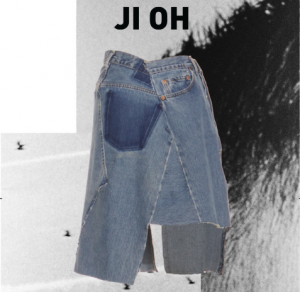What Is Repurposed Clothing?

JI OH Repurposed Skirt
Repurposed garments, also known as upcycled clothing, is the creative reuse of existing garments or materials into entirely new designs, with minimal application of new materials. It is a sustainable process that transforms waste materials or unwanted products into new materials or garments of better quality or for better environmental value. It can be as simple as taking one existing garment, such as a pair of jeans, and re-cutting and shaping them into an entirely new garment, such as a skirt (see photo above—and for sale! At https://shop.jiohny.com/products/another-006-denim-skirt). Or it could involve taking several garments and mashing them together to create something new entirely. Cutting room scraps or waste materials can also be incorporated (http://zerowastedaniel.com has been on the vanguard of this). However varied the approach, several points remain the same—the creativity required to design and re-construct each new upcycled style and the fact that they are more sustainable by virtue of re-using existing materials. (An additional option for garments too damaged to be re-used is to be upcycled into recycled fibers. So, for instance, a favorite shirt may one day provide the fiber that insulates a home, or the fabric of a sofa. The end result being that a garment might have six or seven life cycles before it heads to the landfill…)
In fact, you could even say it’s a hot trend in high-end fashion right now. Many designers are putting luxury spins on second-hand clothing, repurposing them to appeal to the socially conscious consumer, and in an effort to curb the waste generated by an industry that produces some of the most pollution in the world. And it’s a big problem. In 2019, Americans will throw away more than 35 billion pounds of textiles, according to the Council for Textile Recycling. That’s nearly double the number from 1999. It’s more important than ever, environmental advocates say, to keep that clothing out of landfills, ss research also indicates the fashion industry will use 25 percent of the world’s carbon budget by 2050.
Several big brands, such as Patagonia’s Worn Wear and Eileen Fisher’s Renew program, have been at the forefront of this movement from the very beginning. There’s a powerful message when such big brands along with a growing cadre of smaller companies with a keen eye towards fashion make a commitment to re-using and recycling. But what does this actually mean from a business angle, and how do you scale these garments out into production? Stay tuned next week to find out how Factory8 approaches these hurdles!